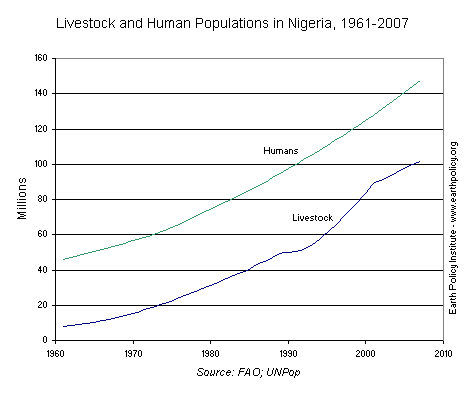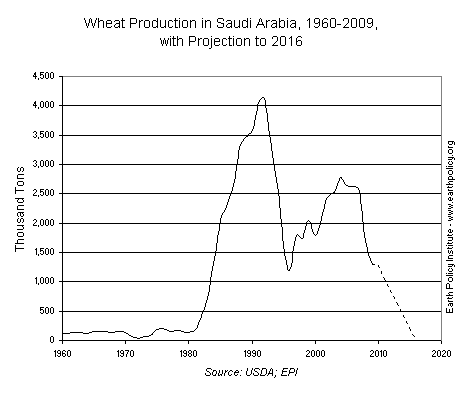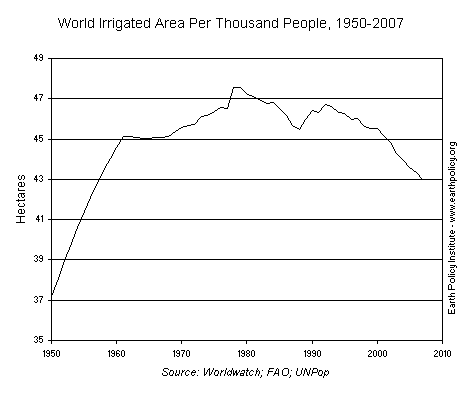"Eliminating water shortages depends on a global attempt to raise water productivity similar to the effort launched a half-century ago to raise land productivity, an initiative that has nearly tripled the world grain yield per hectare." –Lester R. Brown, World Facing Huge New Challenge on Food Front in Plan B 3.0: Mobilizing to Save Civilization
World agriculture today faces pressure from many sources. On the production side, the amount of unused arable land worldwide has dwindled. Overworked soils are becoming eroded and degraded, and overpumped aquifers are being depleted. Meanwhile, as the global population grows and increasing biofuel production converts grain into fuel for cars, demand for food continues to climb. In Chapters 2 and 9 of Plan B 4.0, Lester Brown discusses these challenges. Here are some highlights from the supporting data:
In Nigeria, Africa’s most populous country, human populations increased threefold from 1961 to 2007, while livestock populations grew 12-fold. Increasing foraging needs and human food needs have placed excessive demands on soils. The country is losing 867,000 acres of cropland and rangeland to desertification each year.
On the water front, Saudi Arabia stands out as a dramatic example. Following the 1970s Arab oil export embargo, the Saudis, fearing a retaliatory embargo on grain, decided to become self-sufficient in wheat. They heavily subsidized irrigation, pumping water at great depths from a non-replenishable fossil aquifer, in order to farm the desert. Yet in early 2008, after being self-sufficient in wheat for over 20 years, the Saudis announced that with their aquifer largely depleted, they would reduce their wheat planting each year until 2016, when wheat production will end. Although Saudi Arabia is the first country to acknowledge publicly how falling water tables are affecting harvests, over half the world’s population lives in countries where aquifers are being depleted faster than they can be replenished.
World food production continues to increase, yet the rate at which it is increasing has slowed. From 1970 to 1990, world grain production grew by 64 percent. From 1990 to 2009, it increased by only 24 percent. Past growth in agricultural production was fueled in part by expanding irrigation: world irrigated area tripled from 1950 to 2000. However, expansion of irrigated area has since slowed significantly as land and water availability has declined, showing almost no growth in the past decade.
When growing global population is taken into account, this trend becomes even more concerning. The world irrigated area per thousand people has declined from a high of over 47 hectares (116 acres) in the late 1970s to only 43 hectares (106 acres) per thousand people in 2007.
Growing populations and pressures on agricultural production have meant increasing food insecurity around the globe. The number of hungry people in the world declined from 878 million in 1970 to 825 million in the mid-1990s, but it has been rising ever since. In 2009, for the first time, the world’s hungry numbered more than 1 billion.
The global agricultural situation may be dire, but Plan B 4.0 offers solutions. With improvements to land and water management and measures to address population growth, we have the ability to restore our agricultural systems and secure food supplies. You can download our datasets or read the book to learn more about the challenges facing world agriculture and the Plan B solutions.


 Print:
Print:  Email
Email


